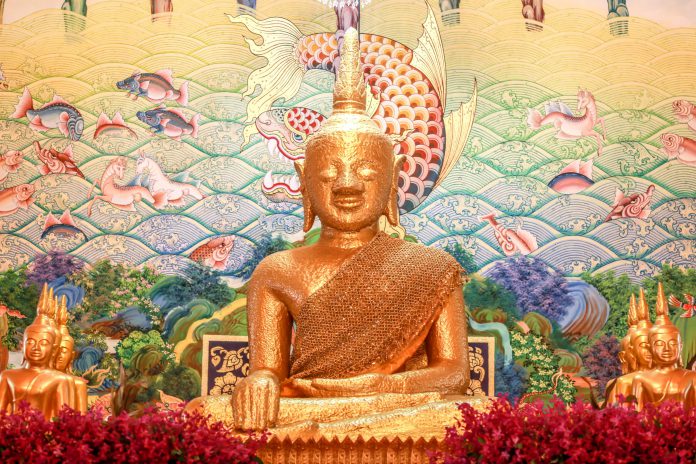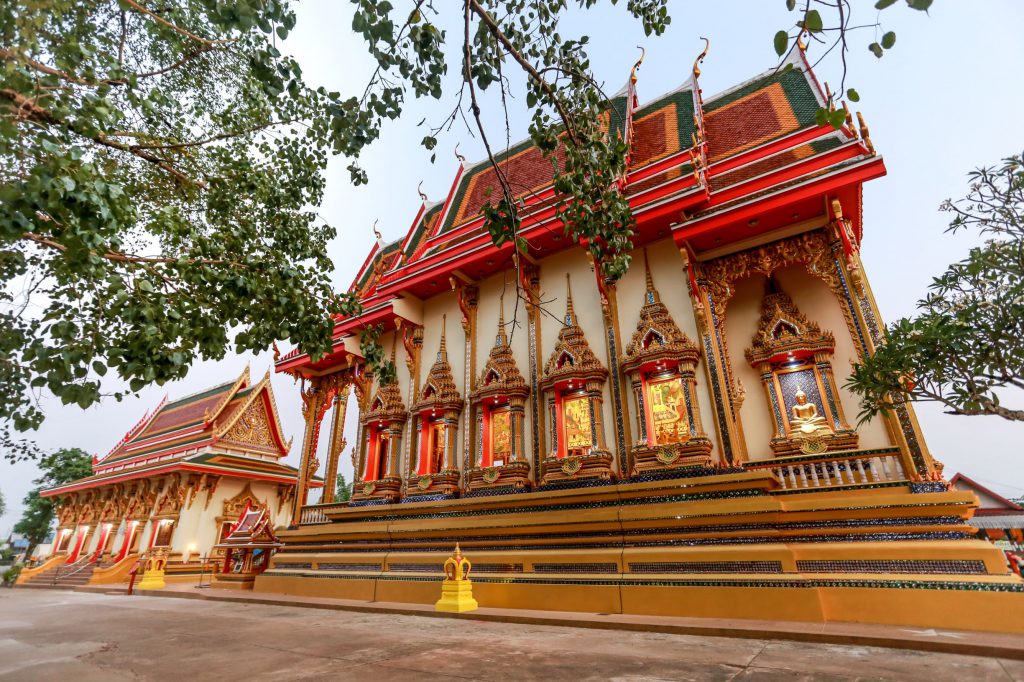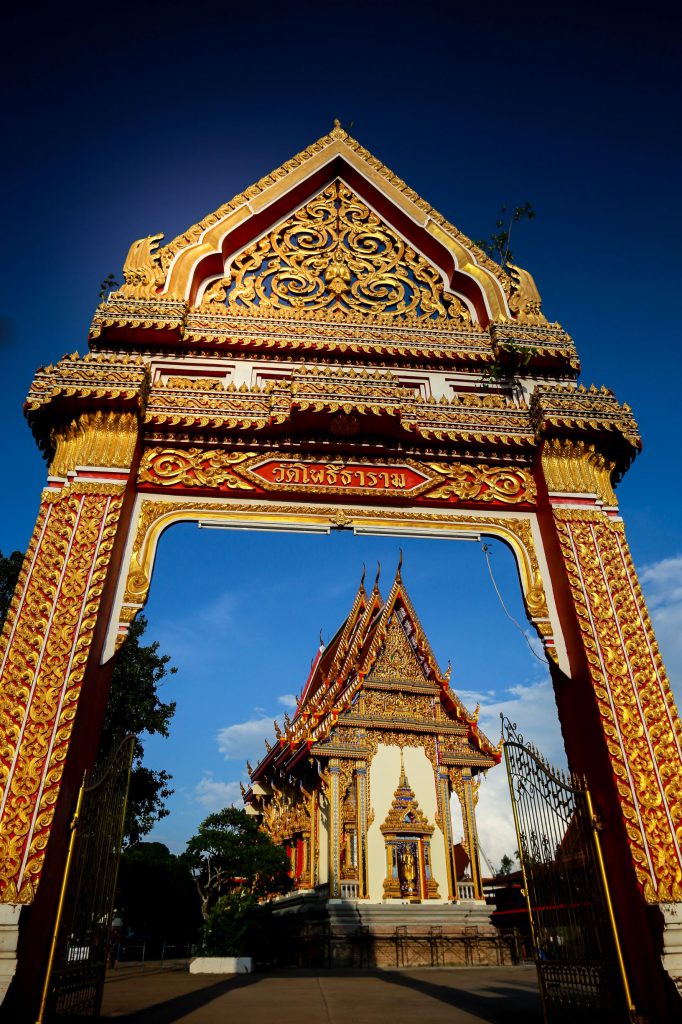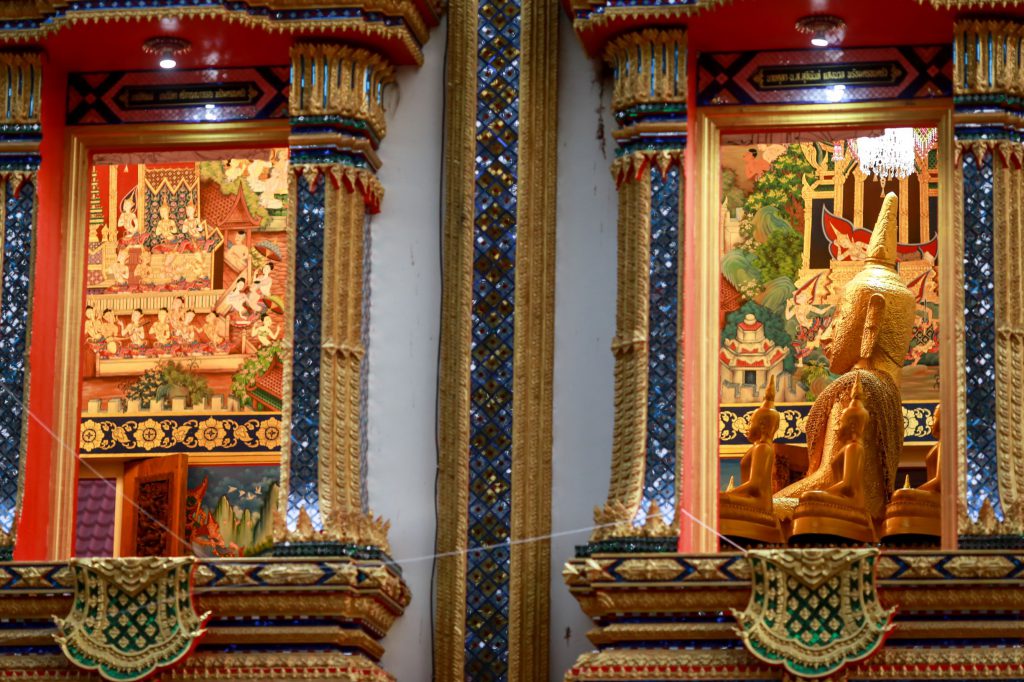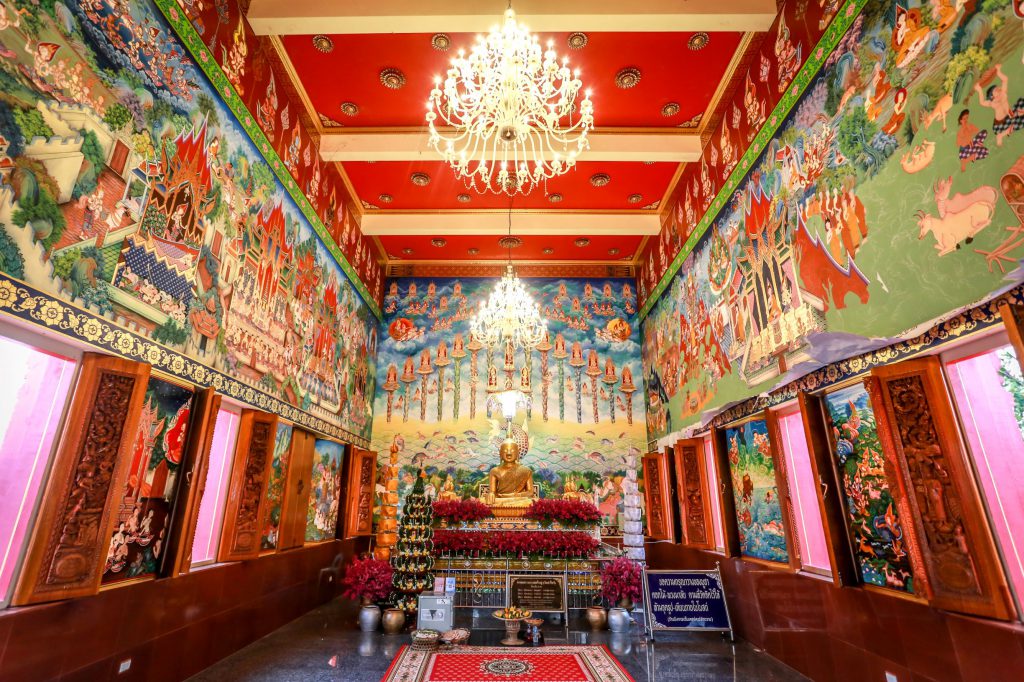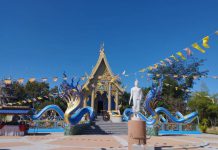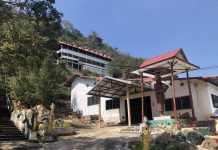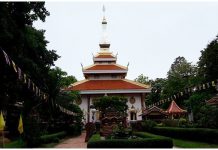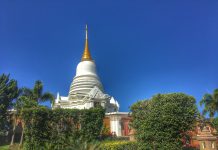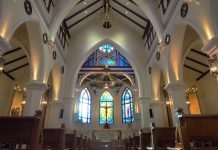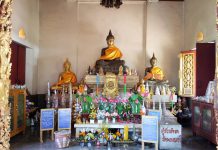วัดโพธาราม (วัหลวงพ่อพระใหญ่) ตั้งอย๋บ้านท่าไคร์ หมู่ 5 ตำบลบึงกาฬ ห่าจากตัวเมืองบึงกาฬ 5 กิโลเมตร ตามทางหลวงหมายเลข 212 (บึงกาฬ-นครพนม) เป็นที่ประดิษฐานหลวงพ่อพระใหญ่ พระพุทธรูปปางมารวิชัย หน้าตักกว้าง 2 ศอก 1 คืบ (5 ฟุต 4 นิ้ว) ประดิษฐานบนแท่น 4 เหลี่ยม ซึ่งได้บูรณขึ้นใหม่ในปี 2537 ชาวบึงกาฬได้จัดให้มีการสมโภชหลวงพ่อพระใหญ่ปีละ 2 ครั้ง คือประเพณีบุญเดือน 3 หรือบุญข้าวจี่ มีการถวายปราสาทผึ้งด้วย และประเพณีสรงน้ำหลวงพ่อพพระใหญ่ จัดงานสัปดาห์หลังเทศกาลสงกรานต์ พระพุทธคุณ ให้มีความเจริญรุ่งเรือง มีตำแหน่งการงานที่ใหญ่ขึ้น มีโชคลาภแคล้วคลาดปลอดภัย การสักการะ บนบาน สักการะด้วยดอกไม้ ธูปเทียน และบนบานด้วยบั้งไฟตะไล ซึ่งในอุโบสถจะให้ผู้ชายเท่านั้นเข้าำไปกราบไหว้ ส่วนสุภาพสตรีให้กราบ
ลักษณะเด่น
หลวงพ่อพระใหญ่เป็นพระพุทธรูปปางมารวิชัย มีความสำคัญ และ เป็นพระพุทธรูปที่มีความศักดิ์สิทธิ์ เป็นศูนย์รวมจิตใจของชาวบึงกาฬ
ประวัติ
ตามตำนานและคำบอกเล่าของคนเฒ่าคนแก่หลายรุ่น หลายสมัยเล่าสืบต่อกันมาประมาณสองพันกว่าปีมาแล้ว จนถึงยุคสมัยหลังๆ ซึ่งแต่ก่อนคนเหล่านี้ส่วนมากได้อพยพครอบครัวมาจากเมืองยศ (บริเวณจังหวัดยโสธรในปัจจุบัน) มาตั้งถิ่นฐานริมฝั่งแม่น้ำโขงและร่นขึ้นมาทางเขตชัยบุรี จากนั้นต่างก็จับจองพื้นที่หากินแล้วเริ่มขยายอาณาบริเวณไปเรื่อยๆ จนถึงบริเวณที่รกทึบที่สุดเป็นป่าดงดิบ มีไม้นานาพันธุ์ เช่น ไม้ยาง ไม้ตะแบก ไม้สัก ไม้ไผ่ป่า ขี้นอยู่อย่างหนาแน่นและเต็มไปด้วยสัตว์ป่าหลายชนิด ที่อาศัยอยู่บริเวณดังกล่าว เนื่องจากเป็นป่ารกทึบมากชาวบ้านที่มาตั้งถิ่นฐานอยู่รอบๆ จึงได้ร่วมกันในการถากถางเพื่อจะได้มีพื้นที่มากขึ้น หลังจากที่ได้ทำการถากถางอยู่เป็นเวลาหลายวันก็พบพุ่มไม้ที่สูงและหนากว่าที่อื่นๆ เมื่อถางป่าดังกล่าวออกก็พบพระพุทธรูปเดิมที่เต็มไปด้วยเถาวัลย์พันรอบองค์อยู่ จึงได้นำเถาวัลย์ออก แล้วปัดกวาดบริเวณรอบๆ ก็พบว่าพระเกตุมาลาของหลวงพ่อหักเพราะถูกช้างป่ากระชากเถาวัลย์ลงมาเพื่อหากินตามธรรมชาติของสัตว์ป่า และเห็นเป็นรูปร่างของสถานที่บำเพ็ญบุญ หรือสถานที่ประกอบกิจกรรมทางพุทธศาสนา อีกทั้งยังพบซากเครื่องปั้นดินเผา โอ่งโบราณ รวมทั้งเครื่องใช้อีกหลายอย่างองค์พระพุทธรูปนั้นตั้งแต่ได้พบมาถึงปัจจุบัน
Wat Photharam (Wat Luang Pho Phra Yai) is located at Ban Tha Khrai, Village No. 5, Bueng Kan Sub-district, 5 kilometers from Bueng Kan city, along Highway No. 212 (Bung Kan-Nakhon Phanom) where Luang Pho Phra Yai is enshrined. The Buddha image in the subduing Mara posture, width of 2 cubits 1 creep (5 feet 4 inches) is enshrined on a four-sided pedestal, which was restored in 1994. The Bueng Kan people have organized the celebration of Luang Pho Phra Yai twice a year, which is the merit-making tradition of the 3rd month. or Bun Khao Jee There was also an offering of the Bee Castle. and the tradition of bathing Luang Por Phra Yai Organize the week after Songkran festival. Phra Phutthakhun to be prosperous. Have a larger job position There is good fortune and safety. Worshiping on the bloom, worship with flowers, incense, candles, and on the bloom with pinballs. in which only men are allowed to enter and pay homage As for the ladies, pay their respects.
Features
Luang Pho Phra Yai is an important Buddha image in the subduing Mara posture and is a sacred Buddha image. It is the center of the mind of the Bueng Kan people.
record
According to legends and stories of old people for many generations Many periods have been passed down from each other for more than two thousand years. until later In the past, most of these people had migrated from their families from Muang Yot. (in the present Yasothon province) to settle on the banks of the Mekong River and shorten up the Chai Buri district. Then they occupied a living area and began to expand the area continually. until the most densely forested area is evergreen forest There are many species of trees such as rubberwood, tabaek, teak, and wild bamboo, densely populated and filled with many kinds of wildlife. residing in the area Because it is a very dense forest, the villagers who settled around So we have come together in sarcasm in order to have more space. After several days of pecking, a taller and thicker bush was found. When the forest was cleared, the original Buddha image was wrapped around him with vines. therefore took out the vine then sweep the area around Found that Luang Por’s Ketumala amulet was broken because the vine was pulled down by a wild elephant to seek for the natural food of wild animals. and saw it as the shape of a place of merit or places for Buddhist activities They also found the remains of pottery, ancient jars, and many other utensils that Buddha images have been found since until the present.

